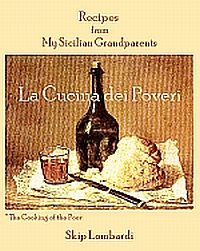Modern Spice
June 11th, 2009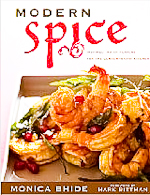
Modern Spice
Inspired Indian Flavors for the Contemporary Kitchen
Monica Bhide
Simon & Schuster (April 21, 2009)
288 pages; $25.00
Every culinary tradition that immigrated to the United States became something else once its practitioners settled themselves here.
In a sweeping generalization (for many households and communities are certainly exceptions), I’ll declare that some of these immigrant food cultures have lost much in translation: Japanese, Chinese, and Mexican are glaring examples. But other culinary cultures have gained: Eastern European, Greek, and Scandinavian cuisines are good examples on the plus side, if only because abundant ingredients and social stability in the U.S. allowed those immigrants to expand their traditions with ingredients they already knew but which were scarce in their homelands.
But regarding the multiple cuisines of the Asian Subcontinent, I have no single verdict. (I’ve lived and cooked in India, and I know Indian* cuisines from the diaspora—from market stalls, and home kitchens to grand restaurants in places I’ve resided or worked—London, Portugal, East Africa, the Arab Gulf, and the US.)
Everywhere, practical cooks will seek substitutions for hard-to-get ingredients. But one thing Indians, Pakistanis, and Bangladeshis in America cannot replace is the culture of domestic help that facilitated much of their cuisines’ complex refinement. Even families of modest means had servants, and until very recently many households were multi-generational and included grandparents, daughters-in-law, aunts, and cousins. Extra mouths, yes, but also extra hands—to roast and grind spices, grate coconuts, and keep fried treats and breads coming hot from the kitchen while the rest of family sat down to a meal.
Here, immigrants from the Subcontinent have assimilated while maintaining many of their traditions. But the B4 visa software bachelors of Silicon Valley and the first and second generation Indians who typify many of the South Asians in the US today are just like so many other Americans: too busy to cook or ignorant of the techniques needed to create a meal from scratch.
Enter Monica Bhide, corporate-consultant-turned stay-at-home-mom who loves to share food. She has practical considerations: two kids, a husband in a high-powered job, and the usual demands of a suburban American—and no visible servants. She’s a tireless and generous commentator, journalist, and talk-show guest who seems to have something of a financial cushion. And that’s particularly significant, for she is unabashed when she specifies jumbo shrimp, tiny lamb chops, lump crabmeat, basmati rice, jarred chutneys, spice mixes, and other prepared ingredients that are relatively expensive here in the US.
But if there’s a commodity on which many Americans put a higher value than food-totally-from-scratch, it’s time. Monica’s readers will buy boneless chicken breasts and squid rings to save themselves some prep work. Better they take Monica’s shopping list than many others out there in the popular media. Whether discussions of food are in print or on TV, radio, blogs, or Facebook, one has to ask how much of it is actually ever made, and more significantly, made to be shared.
This is not a coffee-table book; every publisher is on a diet these days, and so there are just a few color photos. Nonetheless, the recipes themselves and Monica’s essays on food are imaginative and inviting. Many who purchase Modern Spice will not follow the straightforward recipes; rather, they’ll use them for inspiration. This book won’t teach you how to cook—but if you can read and follow directions, you’ll be able to party.
Should we call her the Desi Devi? Monica writes for her confident and comfortably situated, if not affluent, crowd. If you are reading this blog, you know them: the med-students from Mumbai, geeks from Chennai, and public policy pundits from Poona. Whether they are hip urban professionals in Toronto and Boston or the IT babe in the next cubicle, chances are many of them did not learn to cook—let alone cook like Monica—back in India. But they may have learned here. South Asian or not, anyone who came of age when the Silver Palate cookbooks were on every shelf will understand where Monica’s coming from.
She writes for both the Tuesday-night shopper on her way home from the office as well as the weekend bon vivant pouring his neighbors tamarind margaritas while they grill kebabs. Giving her fans a range of brightly seasoned dishes with minimal fuss, Monica will save her readers time. And the subtle message in a not-so-subtle cookbook is that you should spend that time with people you care about. Pick up the book, then pick up the phone. Invite someone to dinner. Stay home to share food you’ve made yourself.
Tamarind Chicken
(From Modern Spice, Copyright © 2009, Monica Bhide)
This stir-fry is great on top of steamed basmati rice. I use a tablespoon of prepared tamarind chutney to add a quick tamarind flavor to this dish.
Ingredients:
2 Tbs. Vegetable oil
2 – 3 Medium or 6 – 8 small organic shallots, sliced
3 Small green serrano chiles, slit lengthwise
1 Garlic clove, sliced thin
1 Lb. Chicken strips, cut into 1-inch cubes
1/2 tsp. ground turmeric
1/2 tsp. red chile flakes
Table salt
1 Tbs. store-bought tamarind-date chutney
Preparation:
1. Heat the oil in a medium skillet over high heat. When the oil begins to shimmer, add the shallots and green chiles. Sauté for about 1 minute or until the shallots just begin to change color.
2. Add the garlic and sauté for another 30 seconds.
3. Add the chicken and cook 7 to 8 minutes, until the chicken is cooked through.
4. Add the turmeric, chile flakes, and salt to taste and cook for another minute. Add the tamarind chutney and mix until the spice mixture has coated the chicken well. Remove from the heat. Serve hot.
Aromas of Aleppo
June 21st, 2008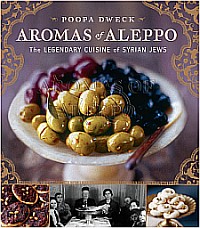
The Legendary Cuisine of Syrian Jews
Poopa Dweck with Michael J. Cohen
Photography by Quentin Bacon
Ecco; 400 pages; $49.95
The exploration of culinary culture is one of the most effective ways to awaken the uninitiated to both the complexities of other societies and the possibilities for fruitful interaction with them.
What do most Americans know of Aleppo, a settlement founded several millennia BCE and continuously inhabited ever since? Not nearly enough. Also known as Halab, Halep, Alep… the city lies in what is now northern Syria. Jews, Muslims, and Christians have long mingled in what was a provincial capital of the Ottoman Empire. Until recently, in this polyglot and multi-ethnic city, a cultural rival of Damascus, one could find residents representing most of the faiths and ethnic groups of the Near East and eastern Mediterranean.
Surrounded by pasturage supporting flocks and agricultural land yielding nuts, wheat, and olives, the city was a stop for the caravans bringing silk and spices from farther east. Given the ingredients at hand, it is no surprise that the inhabitants of Aleppo expressed themselves as much in the kitchen as they did in the city’s esteemed metal, glass, and textile workshops. Aleppo, with its population of Arabs, Turks, Kurds, Armenians, Greeks and other Europeans has long been renowned for the variety and sophistication of its food.
Through their research and documentation of the rich social, spiritual, and gastronomic textures of Aleppo’s Sephardic community, Poopa Dweck and Michael J. Cohen have succeeded admirably in presenting and preserving a culture through food.
Sadly, most of Aleppo’s specifically Jewish dishes are now to be found only in the diaspora of Aleppian Jewery. Middle Eastern political tensions over the past 60 years have caused virtually the entire community of Syrian Jews to emigrate. Aleppian Jews are scattered from London to Latin America. In the US, where large communities reside in Brooklyn, NY and New Jersey, they, like immigrants before them, live amidst other ethnic and religious groups, and use food to maintain their distinct identity. And what food!
While one cannot claim that a Druse, Armenian, Turkish Sufi, or Maronite Christian would never serve roast chicken with lamb-stuffed eggplant or that only a Jew would make a bulgur and walnut salad with tamarind extract, the ingredients and techniques of such dishes drop big hints and speak volumes about communal identity. And that’s most evident in the recipes reflecting kashrut, Jewish dietary law, to which the Aleppian community is strictly adherent. Thus, the rice dishes rich with sheep’s milk butter won’t be prepared by observant Jews if they are serving their pilaf with meat; Aleppian Jews would make theirs with vegetable oil.
There’s a wealth of general Middle Eastern culinary information here: well-photographed and detailed instructions for making string cheese with nigella seeds and recipes for candied eggplants with cloves, pistachio-studded Turkish delight, and sesame halvah. In both Syria and the US, most Aleppians would never make these things at home, but would buy them from specialty shops. Apparently the authors are leaving nothing to chance: they’ve seen their parents’ generation leave home, and that’s enough to make them meticulously list and document what the immigrants managed to bring with them.
Some dishes, like sliha, a concoction of wheatberries with pomegranate seeds, nuts, and coconut served to celebrate a baby’s first tooth, are occasion-specific. Arcane, but easily made, it’s safe to say that sliha is probably something that would be lost were it not for the efforts of the authors.
The production values of this hefty tome are exceptional. With its lush graphics, fascinating archival photos, and luxurious contemporary food styling, the book is—in a word—gorgeous.
For many, the very idea of Syrian Jewish food may seem recherché, but the recipes, simple and clearly written, yield extraordinary results.
Syrian or not, Jew or gentile, for anyone who seeks to learn more about the Middle East and its culinary legacy, this would be a wonderful present.
Through what has clearly been a labor of love, Poopa Dweck and Michael Cohen have created something of permanent value, not only to their community, but to anyone who knows—or wants to learn—the power of sharing food. And if our world ever needed that power, it needs it now.
With the fragrances of garlic, mint, lemon, saffron, allspice, and rose water—Aromas of Aleppo could literally bring a lot of people to their senses.
By Holly Chase
[ad#bottom]
Book Bites – Part II
January 10th, 2008We continue our eclectic roundup of books that have crossed our desk over the past year.
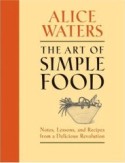
The Art of Simple Food
Notes, Lessons, and Recipes from a Delicious Revolution
Alice Waters
Clarkson Potter (October 2, 2007); 416 pages; $35.00
Perhaps because Ms. Waters herself has been more visible than usual,* a lot of reviewers were expecting this book to be a louder manifesto. There seems to have been anticipation that the founder of Chez Panisse would present us with a declaration more reminiscent of a 1960’s UC Berkeley anti-establishment rally than this quiet, but no less insistent or impassioned, call for responsible food production, preparation, and consumption.
What we have is an iconic book for the new cook or for someone who already cooks but wants to capture the essence of food through Alice Waters’ lens. Given the number of books replete with sensuous photographs and recently published by other celebrity chef-restaurateurs, those who eat with their eyes and collect cookbooks are bound to be disappointed by The Art of Simple Food. It’s not a flashy book. No macro shots of micro-greens; in fact, no photography at all—just painstakingly delicate line-drawings by another member of la famille Panisse, Patricia Curtan.
Will this book accomplish the author’s goal—to help her readers learn how to shop, cook, share, and love food? Absolutely—but book-sellers are going to have to work a little harder until enough people literally get Alice Water’s message
Ms. Waters lays out the reasons to plant gardens, shop locally, and support local farmers. She exhorts her readers to join her
*Note: See our review of the recent biography:Alice Waters and Chez Panisse The Romantic, Impractical, Often Eccentric, Ultimately Brilliant Making of a Food Revolution by James McNamee
As Monty Python used to say, “And now, for something completely different!”

Bobby Flay’s Mesa Grill Cookbook
Explosive Flavors from the Southwestern Kitchen
Bobby Flay
Clarkson Potter (October 16, 2007); 288 pages; $35.00
We could not ask for a better example to contrast with Alice Waters and her Chez Panisse than to juxtapose her with the flamboyant Bobby Flay (photography by Ben Fink) and his Mesa Grill.
Everything about the book and food is intense. From the larger-than-life photos with gorgeous props to the elaborate mis-en-place and multi-step recipes, you know this is food as theater. You can almost smell the mesquite, hear the sizzle of the grill, and feel the heat (there’s a Scoville scale for rating chiles). Or is that glow and warmth coming from the foot-lights? Local food? Fuhgeddaboudit—this is New York, so you might guess that the ingredients for a Southwest fusion-menu were not gathered by Native Americans foraging in Central Park.
But like many who finally got great seats to Phantom of the Opera or Cats, the diners who got their table in the exuberant Mesa Grill want something more than an Amex receipt by which to recall the experience. A splashy book like this fills the bill. The ambitious may actually cook from it—for the recipes are well-organized. While Alice Waters is writing for the home cook, Bobby Flay is scaling-down genuine restaurant food, whose execution at Mesa Grill depends on a legion of prep artists. Not many home cooks are going to do Cornmeal-Crusted Oysters with Mango Vinaigrette and Red Chile Horseradish or Sixteen-Spice Chicken with Cilantro-Pumpkin Seed Sauce when they want to whip up dinner after a day at the office. But if they love the process, they’ll love this book, and their friends and families will love them for preparing this food.
Does this sound like a refrain? Maybe Bobby and Alice should share some space after all—on both the stove and the shelf.
Disclosure: Clarkson Potter sent us both of these books for review
Book Bites – Part I
December 15th, 2007An eclectic roundup of books that have crossed our desk this year.
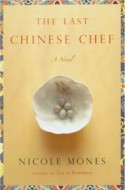 The Last Chinese Chef: A Novel
The Last Chinese Chef: A Novel
Nicole Mones
Houghton Mifflin (May 4, 2007); 288 pages; $24.00
The procuring, preparation, presentation, and enjoyment of food provide an excellent introduction to cuisine as a mirror of modern China. Tension between reverence for past traditions and the brashness of an expanding consumer class can play out on a Beijing menu as much as on a city street clogged with bicycles and SUVs. Amidst the improbable mid-life situations of the protagonists and the novel’s strained plot, the strongest character, China’s complex cuisine, stands out. From crisp yet spongy jelly-fish to lotus root with sausage and pungent celery, nuanced textures and flavors carry on the real dialogue.
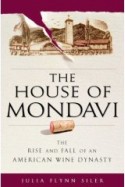 The House of Mondavi
The House of Mondavi
The Rise and Fall of an American Wine Dynasty
Julia Flynn Siler
Gotham (June 21, 2007); 464 pages; $28.00
Take the classic immigrant saga: hard work, strife, success…and more success. Set this drama in California, the ultimate American dreamscape. Give the plot and subplots, like the very vineyards that provided Cesare Mondavi and his descendants with their livelihoods, decades to develop.
Add the seemingly inevitable elements of sibling rivalry and hubris; bring in the lawyers and accountants. It’s the tale of another family businesss whose growth and influence surpassed the visions of its founders… But if that’s not enough, change the names and repeat the cycle of superlative achievements and suspicion with the next generation.
Speed-dial the attorneys and the TV news crews. Finally, allow Julia Flynn Siler from the Wall St. Journal to put the whole show together as a business thriller.
 The Year of Eating Dangerously
The Year of Eating Dangerously
A Global Adventure in Search of Culinary Extremes
Tom Parker Bowles
St. Martin’s Press (September 4, 2007); 400 pages; $24.95
You know that Tom Parker-Bowles wants to be Anthony Bourdain rather than a gentleman who knows better. Being the thirty-something son of the Duchess of Cornwall and, thus, the step-son of Prince Charles can hardly be considered an occupational handicap unless one wants to be taken seriously as one more enfant terrible de cuisine.
If we thought that we might be pushing the author over the brink and into inconsolable depression, we wouldn’t say that we were disappointed in his book. But we think he’s probably quite well-balanced, so we’ll take him to task for wasting his talents; he is an adroit writer. Maybe you can take the boy out of Eton, but you can’t take Eton out of the boy… Like many schoolboys, he’s willing to try almost anything to get attention. Whether it’s incendiary, illegal, endangered, smelly, treacherously hard to harvest, or still wriggling, our boy wants to eat it.
And we quickly realize, he’s simply testing the limits of tolerance—of both himself and his readers. Tom Parker-Bowles ingests hot chillies, insect eggs, dog soup, and things both live or seriously decomposing. Although he’s capable of some trenchant reflection (on the cultures he experiences or how meat animals are raised and slaughtered) most of the book confirms that he’s opening his mouth at the table so he can boast of his exploits later. His vagabond year was one of extreme sport (and, in some instances, extreme expense). We hope he’s gotten this out of his system.
Disclosure: The publishers of these books have sent them to us for review.
[ad#bottom]


